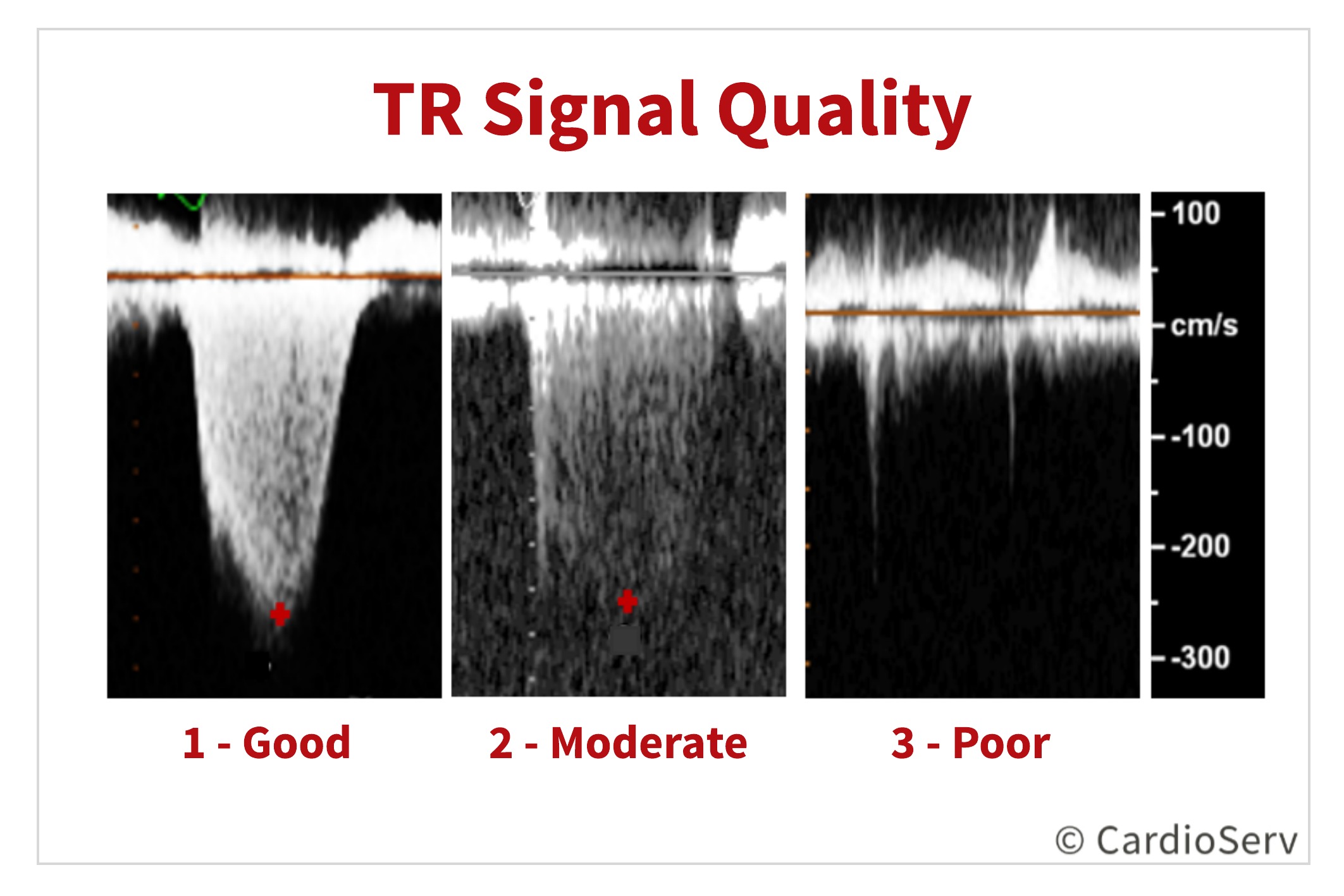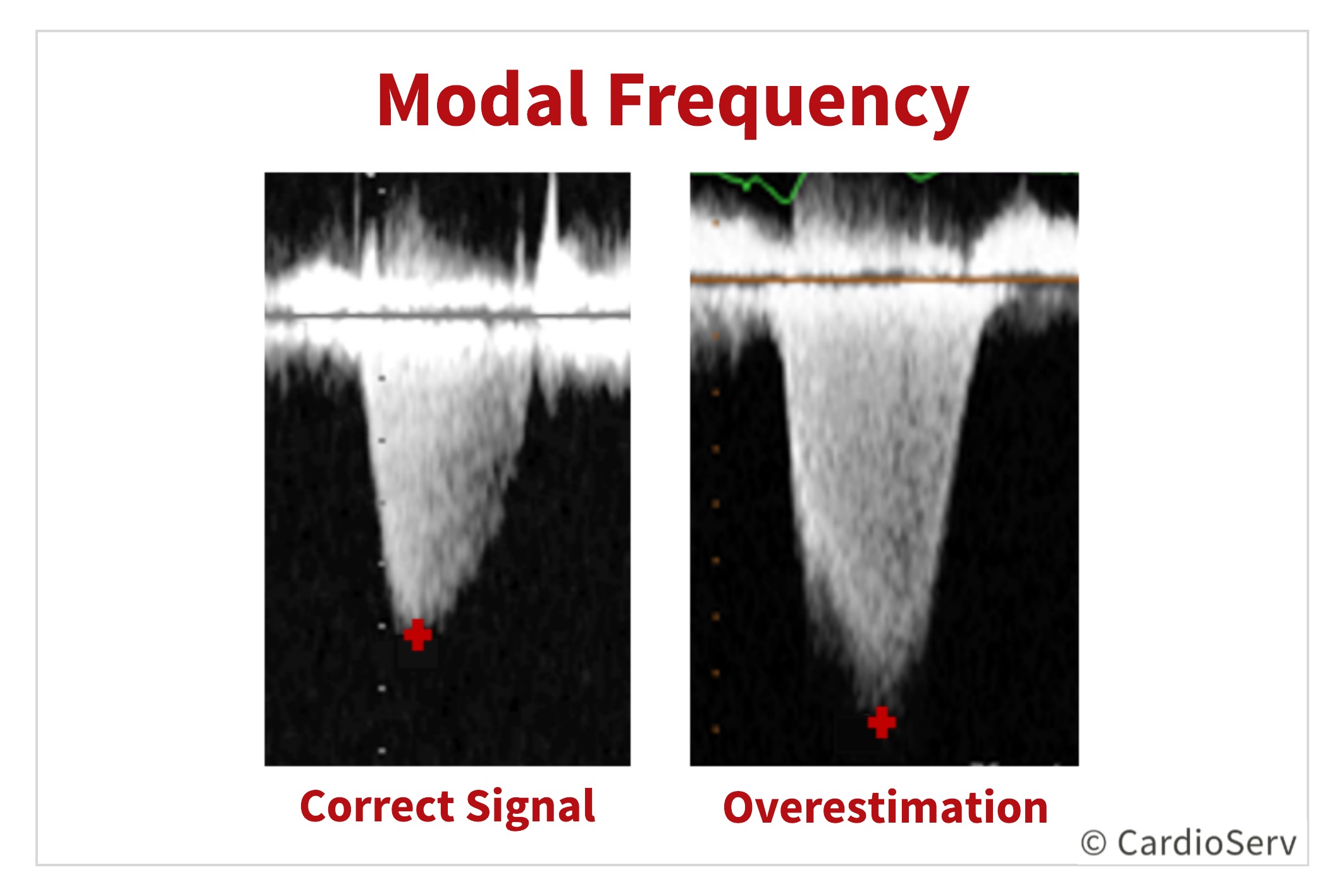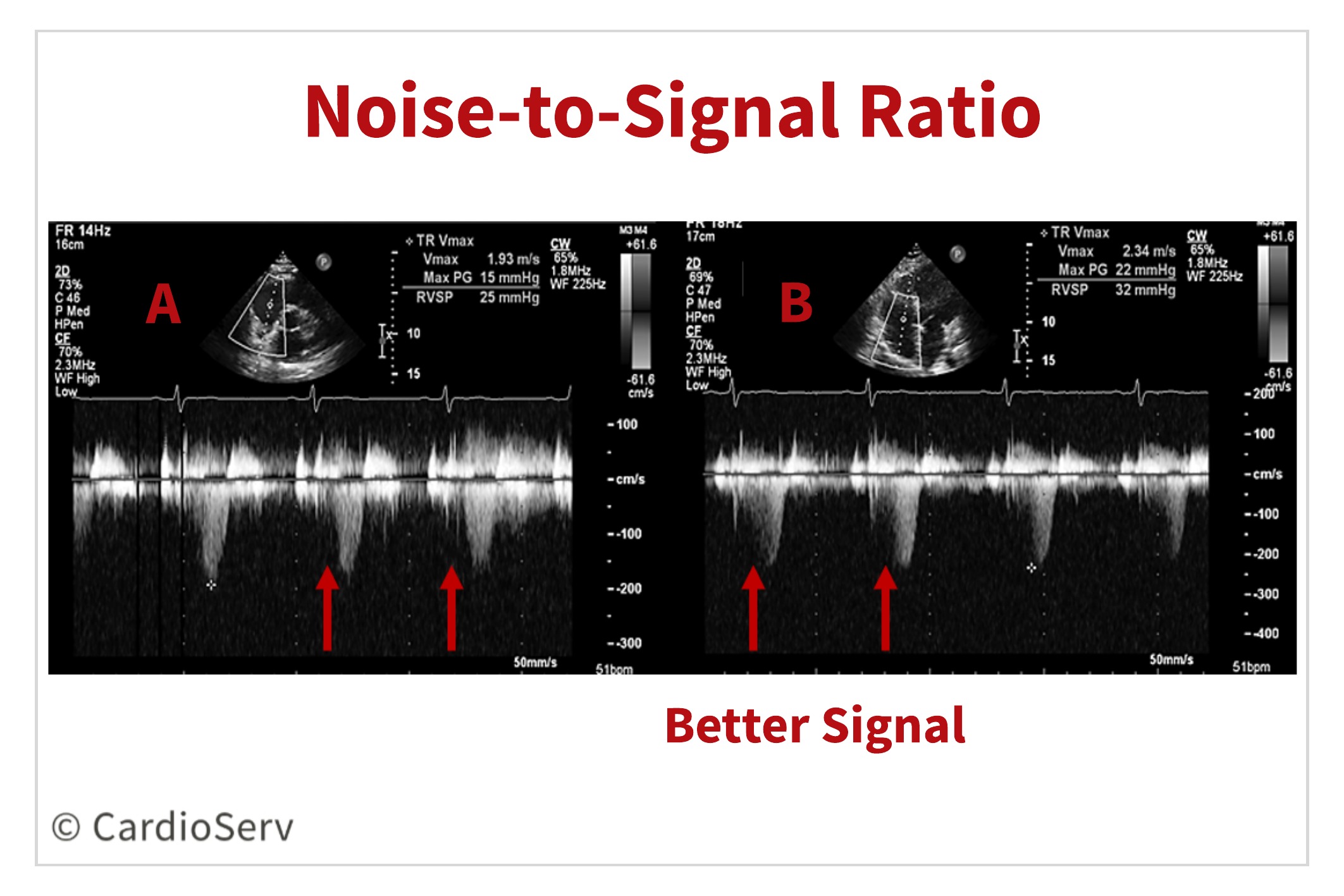CardioServ has posted various blogs on the topics of Right Heart Quantification and RVSP, following ASE guidelines. If you missed them, you can find them here. One of the biggest factors in determining the RVSP via echo is evaluating and measuring the tricuspid regurgitant (TR) Doppler jet. Measurement and interpretation of TR jet velocity varies widely, especially in regards to the quality of the measurement.
This week, we are happy to feature Yvonne Prince ACS, RDCS, RVT, RDMS, as our guest writer. Learn more about Yvonne in our Educator Spotlight. Yvonne will review the 2 Ways to properly assess TR Jets for accurate RVSP calculation.
If you ask sonographers why they measure the way they do, the replies vary depending on each sonographer’s training and experience. The most common response always includes, “That’s the way I/we’ve always done it.”
The Journal of American Society of Echocardiography (JASE) published an article that discussed the on-going controversy of the accuracy of the calculated RVSP obtained via echo. The article describes how important the measurement of the TR velocity is, especially in regards to the quality of the jet obtained to measure.
“Overestimation in the clinical report was related mainly to not assigning peak TR velocity at the modal frequency and underestimation to over-reading of uninterpretable signals.”
The article seeks to determine if echocardiography is an accurate method of estimating RVSP as compared to right heart cath.
The main purpose of the article is for readers to have a clear understanding of the characteristics of the spectral Doppler of the tricuspid jet, in order to make an accurate estimation of RVSP simple and consistent for echocardiographers.
Obtaining the tricuspid regurgitation jet is KEY for calculating the RVSP with echocardiography. Detailed attention should be made to the signal quality and modal frequency. The following are recommended steps to obtaining and measuring an accurate TR velocity.
Step 1:
To determine the pressure difference between the right ventricle (RV) and right atrium (RA), the tricuspid regurgitation (TR) jet must be insonated by continuous wave (CW) Doppler in multiple views.
Step 2:
After acquiring the best TR jet spectral training from multiple views, we need to determine the quality of the signal.
 TIP #2: Make sure to measure the modal frequency
TIP #2: Make sure to measure the modal frequencyMeasure the peak velocity of the TR jet, only if the modal frequency is clearly demonstrated!

Technical and patient factors have a strong bearing on accurate estimation of RVSP. Of course, echocardiographers cannot change patients’ conditions or disease states, but they do have control over the system settings.
The following are items to take into consideration when obtaining the TR jet envelope:
#1: Heart Rate
Adjusting the sweep speed to accommodate the heart rate is important for accurate measurement.
#2: Arrhythmias
Arrhythmias are common, as in the setting of atrial fibrillation. They need to be taken into consideration when measuring the TR jet for calculating the RVSP.
#3: Over/Under Estimation
One important item when determining the RVSP by echo is the possibility of over- or underestimation.

The following are considered confounding factors in accurate measurement of any Doppler-derived jet:
*ALD vs. PAH In patients with advanced lung disease, TR signals were more frequently either uninterpretable or only prone to extrapolation. In contrast, TR signals were considered interpretable in the majority of patients with pulmonary arterial hypertension.
(ALD, Advanced Lung Disease; PAH, Pulmonary Arterial Hypertension)
ASE concluded “Echocardiography provides reliable estimation of RVSP …. When careful attention is paid to signal quality and proper interpretation of modal frequency.”
Remember the 2 Ways to Properly Assess TR Jets for Accurate RVSP Calculations:
By following previously discussed tips and adding these two prerequisites to your scanning repertoire, you should rest assured that you are delivering to your patients and your referring providers accurate estimation of RVSP.

Yvonne Prince ACS, RDCS, RVT, RDMS, FASE
Connect on LinkedIn!
References:
“Addressing the Controversy of Estimating Pulmonary Arterial Pressure by Echocardiography” Journal of American Society of Echocardiography. Volume 29, Number 2. February 2016. Pages 93-102




Jul
2018
Jul
2018
Jul
2018